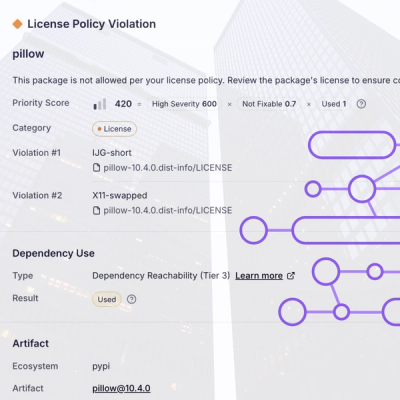
Research
/Security News
Critical Vulnerability in NestJS Devtools: Localhost RCE via Sandbox Escape
A flawed sandbox in @nestjs/devtools-integration lets attackers run code on your machine via CSRF, leading to full Remote Code Execution (RCE).
GSO is an open-source Python library for managing application state. It uses a modified version of the Observer pattern to sync UI state with application state.
GSO was originally designed to work with PySide/ PyQt, but it works well with pretty much every class-based UI library out there.
You will find a lot of examples that can help you get started. The examples are very simple, they are all focused on the pattern that works best with GSO.
You are encouraged to clone the ones that use the UI library you are working with and have a closer look.
In GSO, application state is encapsulated in observables.
An observable is like a wrapper around the actual state or variable.
All an observable brings to the table is that it keeps references to objects (usually UI components) that are interested in knowing when the wrapped state changes.
Observables force notification of observers when encapsulated state changes, so whenever application state changes, UI components can instantly update accordingly.
All UI components that depend on at least one variable in
application state should implement the Observer interface,
and each of these variables should be encapsulated in
an Observable.
That was the O in GSO, the Observer pattern.
You might be thinking, how do UI components reach state? Well, that's where the GS comes to play.
The GlobalState class is used to group all application state variables
and make them globally available everywhere in your code,
so that UI components can easily request state updates
and observe application state. It acts as a singleton, and stores
all the observables in a Python dict.
As you already know, an observable can have multiple observers, and an observer can observe multiple observables.
In other words, one variable in application state
can have multiple UI components depending on it,
and one UI component can have it's state depend on multiple
variables in application state, which is why
the notify_state_changed() method on Observers
accepts the parameter action.
If you are familiar with Redux, you probably already have an idea what actions are, they are pretty similar in GSO, but they are not the same.
In both Redux and GSO, actions are objects that describe what kind of update should take place in application state.
In Redux, every action has a unique name, and a payload that has all what is needed to make the corresponding update properly.
However, in GSO, actions are distinct objects that encapsulate
state update logic. They are used by Observables in their apply()
method to update encapsulated state using the encapsulated logic.
If you found any of this confusing or unclear, please refer to the examples.
Make sure you have pip installed, then open a terminal window, and type:
pip install gso
FAQs
An open-source Python library for managing application state.
We found that gso demonstrated a healthy version release cadence and project activity because the last version was released less than a year ago. It has 1 open source maintainer collaborating on the project.
Did you know?

Socket for GitHub automatically highlights issues in each pull request and monitors the health of all your open source dependencies. Discover the contents of your packages and block harmful activity before you install or update your dependencies.

Research
/Security News
A flawed sandbox in @nestjs/devtools-integration lets attackers run code on your machine via CSRF, leading to full Remote Code Execution (RCE).

Product
Customize license detection with Socket’s new license overlays: gain control, reduce noise, and handle edge cases with precision.

Product
Socket now supports Rust and Cargo, offering package search for all users and experimental SBOM generation for enterprise projects.